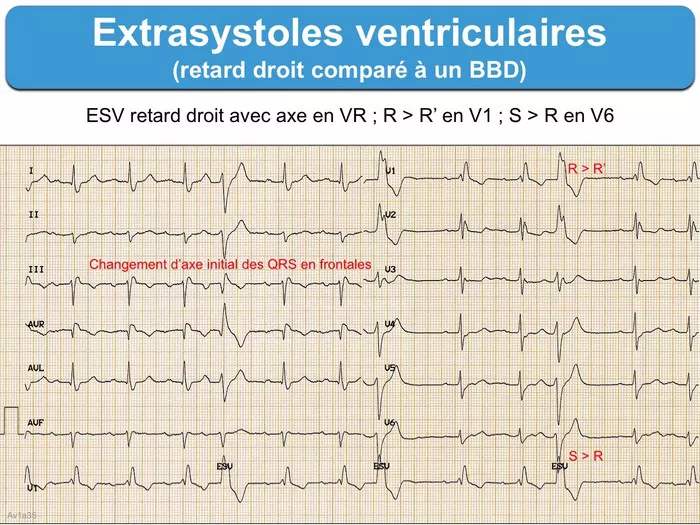Extrasystole, often referred to as premature ventricular contractions (PVCs) or premature atrial contractions (PACs), is a common cardiac arrhythmia that affects millions of people worldwide. While it can be benign in many cases, it can also signal underlying heart conditions that require medical attention. In this article, we delve into the intricacies of extrasystole, exploring its causes, symptoms, diagnosis, treatment, and outlook.
What is Extrasystole?
Extrasystole is a cardiac arrhythmia characterized by irregular heartbeats that occur earlier than expected in the cardiac cycle. These premature heartbeats can originate from either the ventricles (PVCs) or the atria (PACs). In a normal heart rhythm, electrical signals travel through the heart in a coordinated manner, causing it to contract and pump blood effectively. However, in extrasystole, this rhythm is disrupted by additional, premature beats.
Causes of Extrasystole
1. Electrolyte Imbalance: Abnormal levels of electrolytes such as potassium, magnesium, and calcium can disrupt the heart’s electrical activity, leading to extrasystole.
2. Heart Diseases: Conditions like coronary artery disease, cardiomyopathy, and heart valve disorders can increase the risk of developing extrasystole.
3. Stress and Anxiety: Emotional stress, anxiety, and excessive caffeine or alcohol consumption can trigger extrasystole in susceptible individuals.
4. Medications: Certain medications, including stimulants, decongestants, and some asthma drugs, may induce extrasystole as a side effect.
5. Structural Abnormalities: Congenital heart defects or acquired structural changes in the heart can contribute to the development of extrasystole.
Symptoms of Extrasystole
The symptoms of extrasystole can vary widely among individuals. Some may experience no noticeable symptoms, while others may report:
1. Palpitations: Sensations of irregular, fluttering, or pounding heartbeats.
2. Chest Discomfort: Mild chest pain or discomfort during or after premature beats.
3. Dizziness or Lightheadedness: Episodes of dizziness or feeling faint may occur.
4. Fatigue: Excessive tiredness or fatigue, especially if extrasystole is frequent.
5. Shortness of Breath: Breathlessness or difficulty breathing may accompany severe episodes of extrasystole.
It is important to note that while extrasystole can be concerning, especially if accompanied by other symptoms or underlying heart conditions, not all cases require immediate intervention.
Diagnosis of Extrasystole
Diagnosing extrasystole typically involves a combination of medical history review, physical examination, and diagnostic tests, including:
1. Electrocardiogram (ECG): This test records the heart’s electrical activity and can detect abnormalities associated with extrasystole.
2. Holter Monitor: A portable device worn for 24 to 48 hours to monitor heart rhythms continuously and capture any episodes of extrasystole.
3. Event Recorder: Similar to a Holter monitor but worn for longer periods to record heart activity during specific symptoms or events.
4. Echocardiogram: This imaging test uses sound waves to create detailed images of the heart’s structure and function, helping identify any underlying heart abnormalities.
5. Blood Tests: Checking electrolyte levels and cardiac biomarkers can provide additional information about heart health and potential contributing factors to extrasystole.
Treatment and Management
The management of extrasystole depends on its underlying cause, frequency, and impact on the individual’s quality of life. Treatment approaches may include:
1. Lifestyle Modifications: Adopting a heart-healthy lifestyle, including regular exercise, balanced diet, stress management, and avoiding stimulants like caffeine and tobacco.
2. Medications: In some cases, medications such as beta-blockers, calcium channel blockers, or anti-arrhythmic drugs may be prescribed to control heart rhythm and reduce the frequency of extrasystole.
3. Electrophysiology Studies (EPS): This invasive procedure maps the heart’s electrical pathways and may be used to identify and treat specific arrhythmias contributing to extrasystole.
4. Cardioversion: In certain situations, electrical cardioversion may be performed to restore normal heart rhythm.
5. Catheter Ablation: A minimally invasive procedure where abnormal heart tissue responsible for extrasystole is targeted and destroyed using radiofrequency energy or cryotherapy.
It is essential for individuals with extrasystole to work closely with healthcare professionals to determine the most appropriate treatment plan tailored to their specific needs and medical history.
Outlook and Prognosis
The prognosis for extrasystole varies widely depending on its underlying cause, severity, and response to treatment. In many cases, particularly those without significant underlying heart disease, extrasystole is benign and may not require ongoing medical intervention. However, for individuals with frequent or symptomatic extrasystole, close monitoring and management are crucial to prevent potential complications and improve quality of life.
Conclusion
Extrasystole is a common cardiac arrhythmia characterized by premature heartbeats that can originate from the ventricles or atria. While often benign, it can indicate underlying heart conditions that warrant medical attention. By understanding its causes, symptoms, diagnosis, and treatment options, individuals with extrasystole can work with healthcare professionals to manage their condition effectively and maintain heart health.

